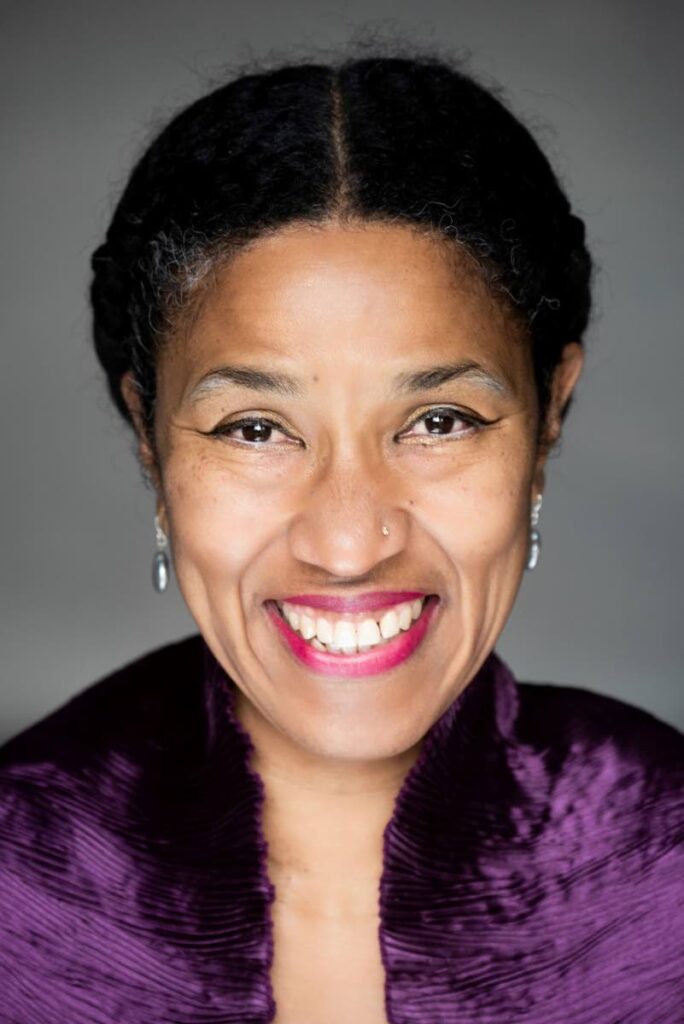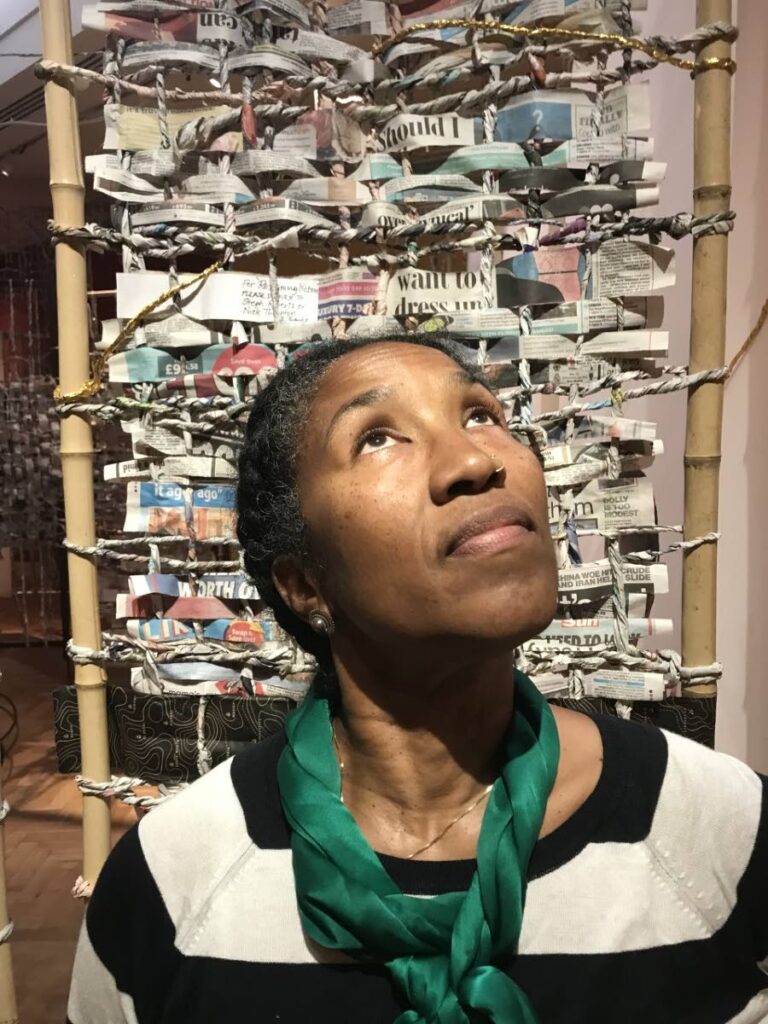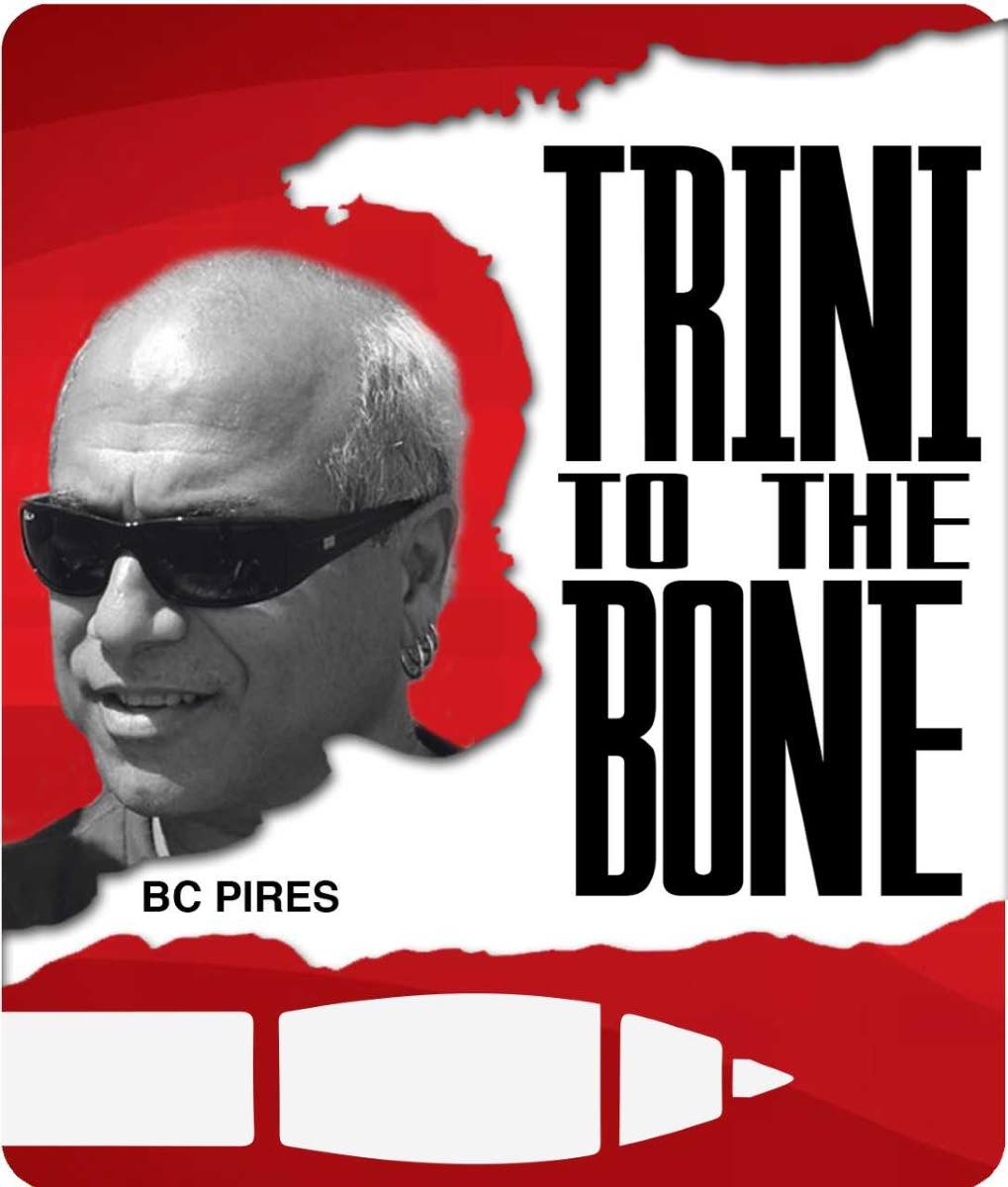Trini to the bone: For the people who were picked on

AS TOLD TO BC PIRES
My name is Mary-Anne Roberts and, with my “Carnival mentality,” I created a yard where the dead could play and find peace.
My yard, the installation Spirited, was created by Adeola Dewis, Miguela Gonzalez, Cindy Ward and me.
It will remain part of the National Museum of Wales Reframing Picton commission until the end of September 2023.
Even if I’ve now lived longer in Cardiff than I did in Trinidad, the warp and weft of me is Trinidad. My first memories are of Belmont, but we moved around a lot. St Augustine, St James, Diego Martin, Santa Cruz, Newtown.
It’s probably more accurate to say I come from Cardiff in Wales now, only because there is no longer a Mary-Anne-shaped hole in Trinidad.
I come from a big family and have a small family of my own. Husband and two (adult) kids.
We’ve lived on the same street for over 30 years. Because I moved around so much when I was younger, I don’t want to move around now.
Primary school was Mucurapo Girls’ and then St Joseph’s Convent.
After A-levels at St James Government Secondary, I taught the curriculum at La Jeunesse Tutorials through art and theatre. Under the tutelage of Janet Baptiste-John. It was a school specifically for children with learning disabilities who didn’t
look like they had learning disabilities. Janet was dealing with ADHD since the 70s.
Another part of my education was Tent Theatre with Ellen O’Malley Camps back when she was Helen Camps. The final part was at Caribbean School of Dancing.
I don’t really know how to box clever.
I was raised RC, but I grew up in Trinidad.
So when my father was doing evening classes in St James, we were over in the mandir. Getting fed dhal and rice!
My best friend was a Muslim girl! Anisha Asgarali, Salome Ali Bocas, we all went Mucurapo together.

I believe in people! And making what we do now count!
The afterlife will look after itself. But I’ll try praying, too. Give it a shot. Belt and braces, you know?
When the children were young, I used to try to come to Trinidad every year. When they became teenagers and we had to pay adult prices for everybody, visits to Trinidad declined massively.
My daughter spent a year in Trinidad when she was eight. My parents loved it and it was huge for her grounding in who she is. Tony Hall asked her what she learned at Belmont Girls Primary.
“I learned to curse,” she said. “I learned to wine. And I learned long division.”
What more you want in life?
Back in the 80s, everybody was wearing black and having their hair pulled back tight with red lips. And I was there with my big, pouffy hair, no makeup and pink jumpers. I used to look at myself in that double image you get of yourself in the opposite window of the tube and think, “God, you’re so ugly!”
One day, in Peter Jones, buying something, I looked across and saw someone and said to myself, “That looking like a Trini!” You know you can spot a Trini anywhere!
And when I looked again, it was myself, in a mirror opposite another mirror. And it went back a thousand times! And I looked at myself and said, “Yes! It is a Trini!” And that was a big moment for me.
You have to make yourself part of where you are.

In a way, I’m very deep into Welsh culture. I sing Welsh medieval poetry in a duo called Bragod with Robert Evans, a musician and independent academic who has reinstated a medieval six-stringed Welsh instrument called the crwth (rhymes with truth) that had actually died out for 300 years.
For us in the Caribbean, even though we know about the First Peoples, history starts in 1492, 1498 in Trinidad.
And it’s marvellous for me now. When you can sing poetry from the sixth or eighth century, it makes you realise how far back humans have been…making mistakes…And also making beauty.
I hate reading and I hate writing. I do them because I have to.
And I’m not bad at it. But I’d rather be dancing, babes.
When I was making my yard, I kept coming back to Women Who Run with the Wolves by Clarissa Pinkola, a book I started reading when I first became a mother.
It’s a book of stories about women and the way we can pass beauty and power on to our children, even in times of abject horror.
Before Spirited, I didn’t know much about Picton, the first English governor of Trinidad. The Welsh Museum sent out a commission for responding to Picton’s portrait. My friend Adeola Dewis, who is Rawle Gibbons’ daugher, who lives up the road from me, had started Laku Neg, the kreyol for Black Yard and she said, “Let we respond, nuh! And we got the commission.
The character who most spoke to me was Luisa Calderon, a mulatto girl, a British citizen, who was tortured in the pose of a dancer. She reminded me of the dolls I used to make for my daughter. And with Miguela Gonzales, another Trini, we talked about bringing Luisa from torture to dance.
How do we transform her from that horrible place? How do we show torture and trauma without traumatising our audience? That’s what the whole thing was about.
We three Trinidadians, Adeola, Miguela and I – and our lynchpin, Cindy Ward, a boss in metalwork – ran our Picton project like a mas camp. The whole community was involved.
People from Liverpool were twisting paper and posting it to me. The whole thing – we call it “our textile of memory and understanding” – is made with twisted paper. We were trying to understand ourselves. Picton to one side, we asked, what can we do for ourselves?
Every household in Wales had sugar-cutters because every household in Wales was getting sugar from the Caribbean! So we had a cabinet of curiosities. I called it Five Cents to See Miss Mary.
The museum has kept things on quite a low profile. But the response has been so far, so positive.
I want to make an analogy of the cuscus root that holds together the soil from being washed away. We are just digging up all our cuscus. Because we feel it’s not good or nice enough.
We have to remember to be doing things for ourselves. Not for other people to say whether it’s good or not.
My grandmother died in 2019 and me and my brother were in Trinidad together for the first time in a long time at Carnival.
We did the typical J’Ouvert thing: see what it had in some old box; my grandmother fan; somebody bra; somebody old pants. We leave Belmont Valley Road, join up with a steelband.
When we reach in town, people asking us who we playing with.
But we didn’t sign up with anybody, we just playing mas! People are waiting for somebody to give them permission to do the very things they need.
Stop thinking about what is s--t and what is not s--t and un-s--t the Carnival! What more you want for J’Ouvert than an old pants and some mud?
We had the time of our lives and then we went home and finish our mother’s souse.
A Trini is all o’ we. And, in that all o’we, we have to find equity and justice.
Because for too long, “all o’ we” is some people dancing on the top and 16-year-old boys could get shot by the police.
Trinidad and Tobago, that’s home, boy!
When I sing with my band Domestic Violins, we do old-time Trinidad calypso with string music. That is me, home!
But Cardiff is home too. Wales is home too.
An Irish folk song says, “Back across the ocean to my home away from home!”
Read the full version of this feature on Friday evening at www.BCPires.com


Comments
"Trini to the bone: For the people who were picked on"